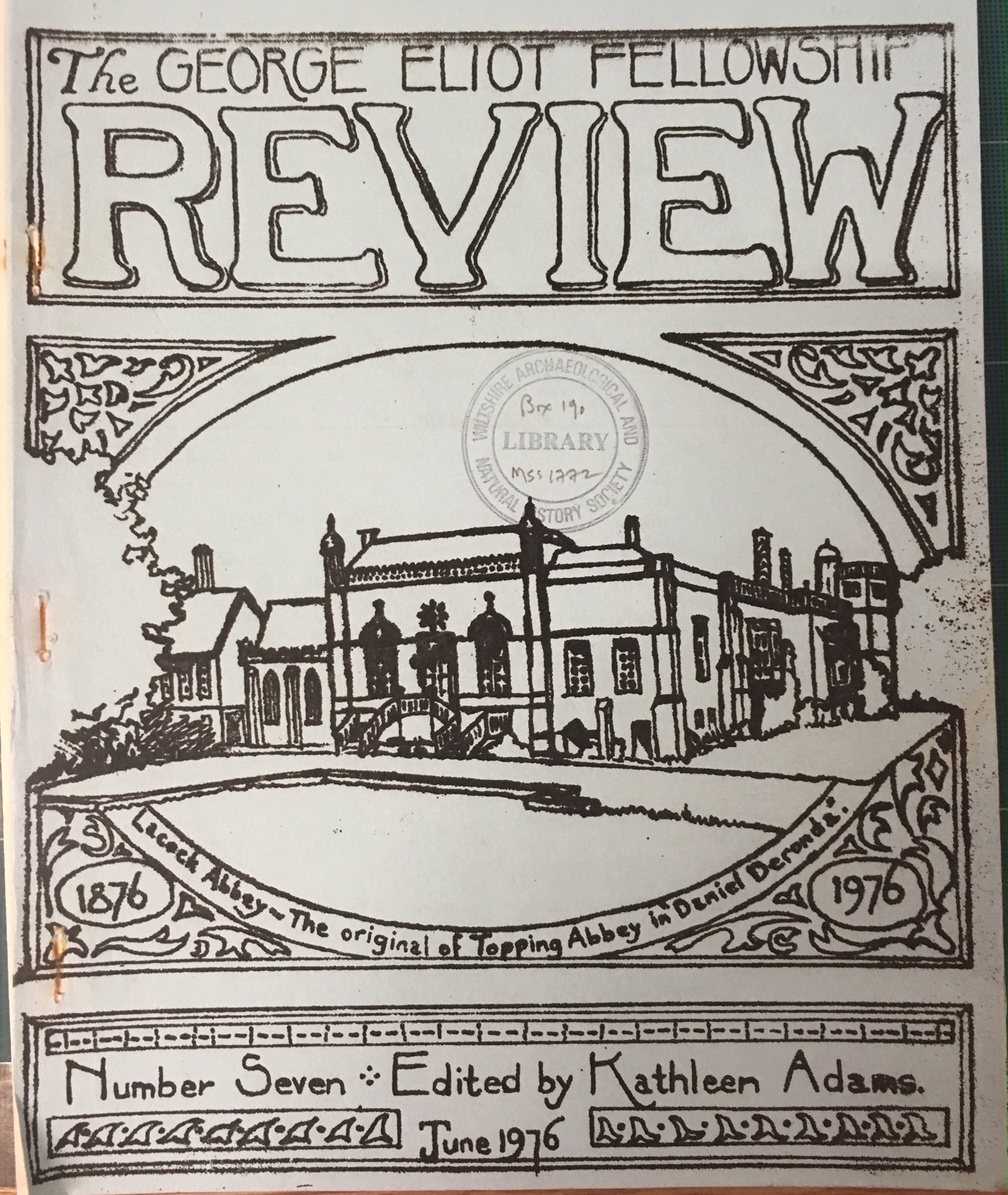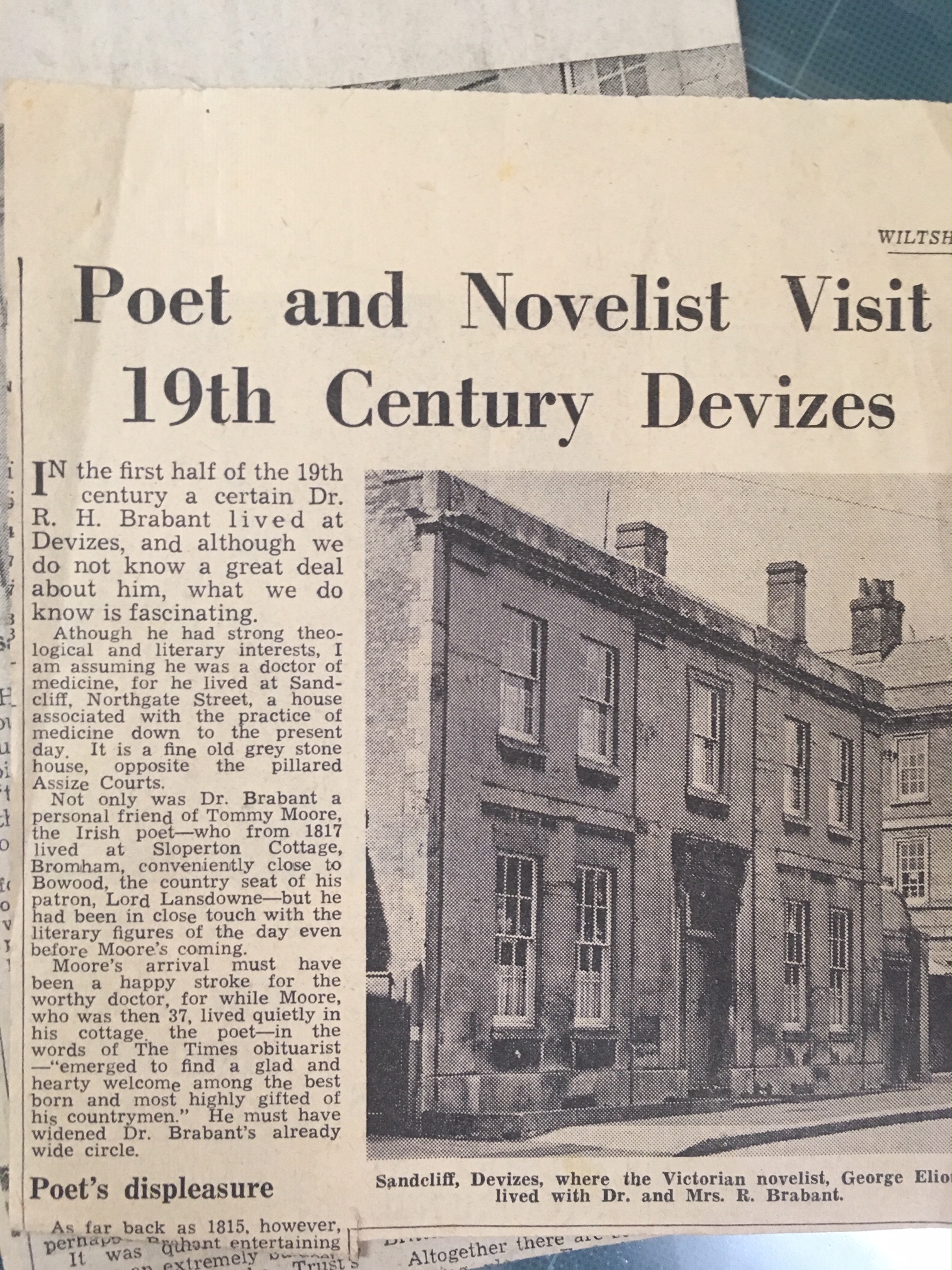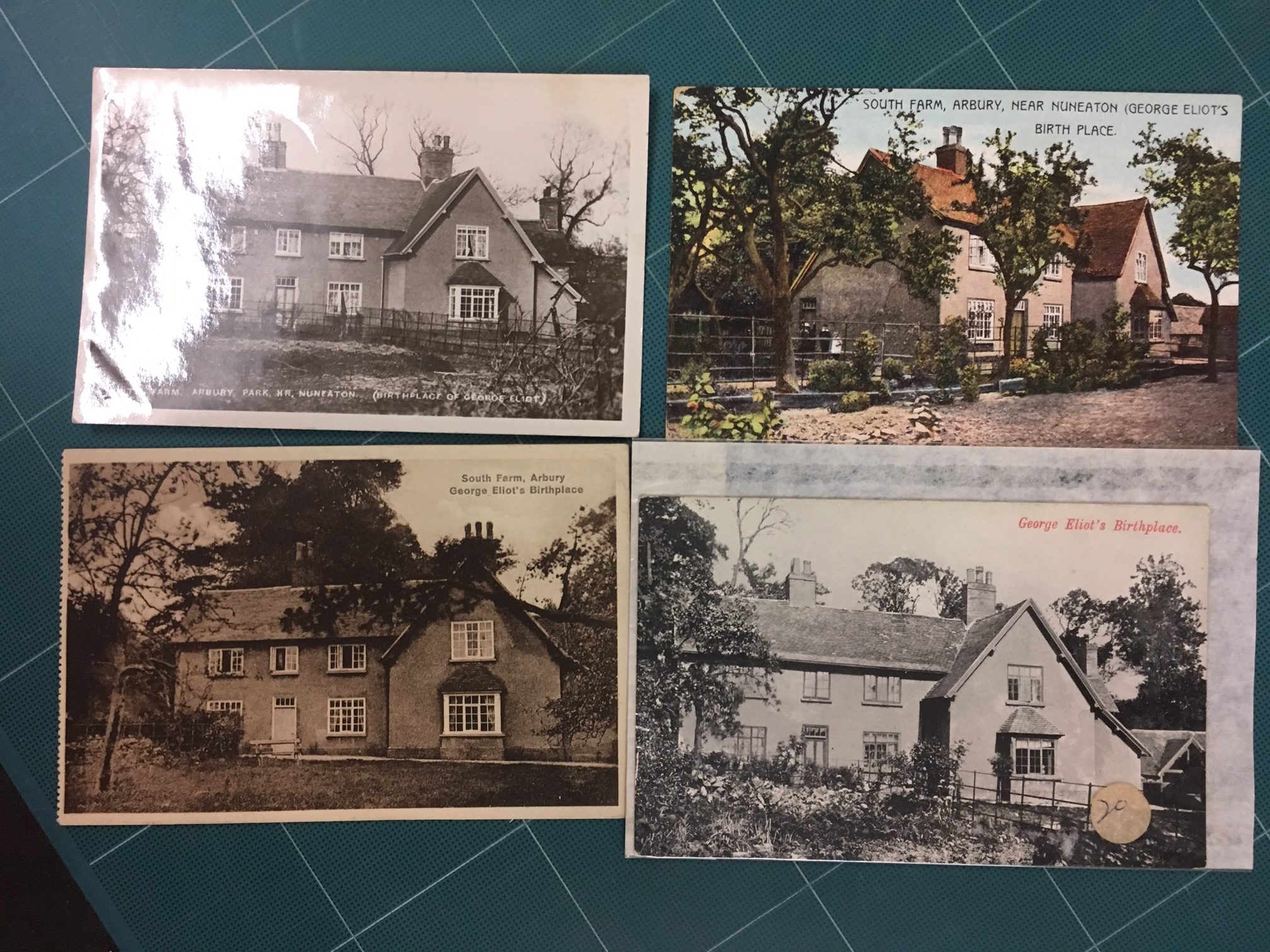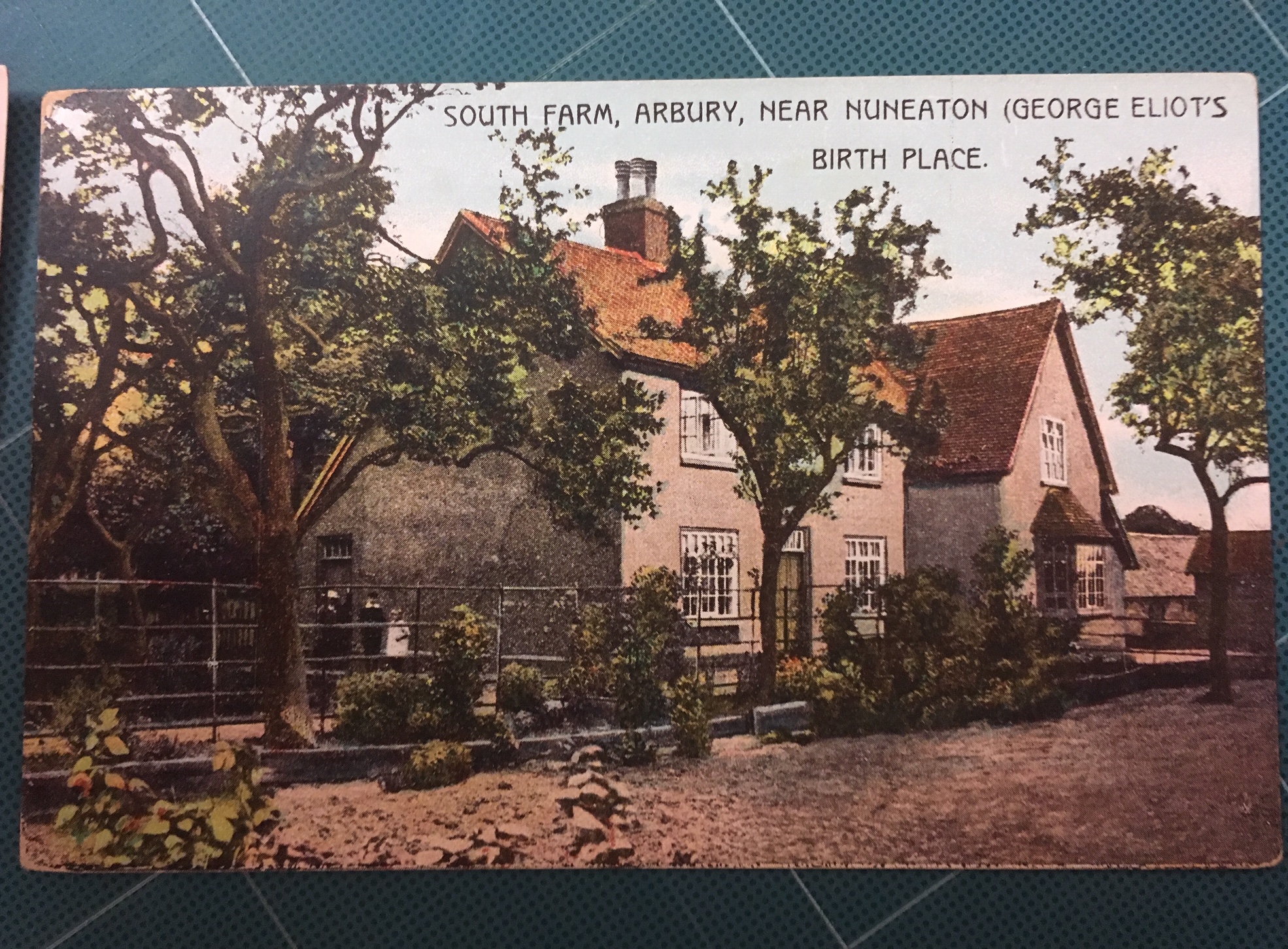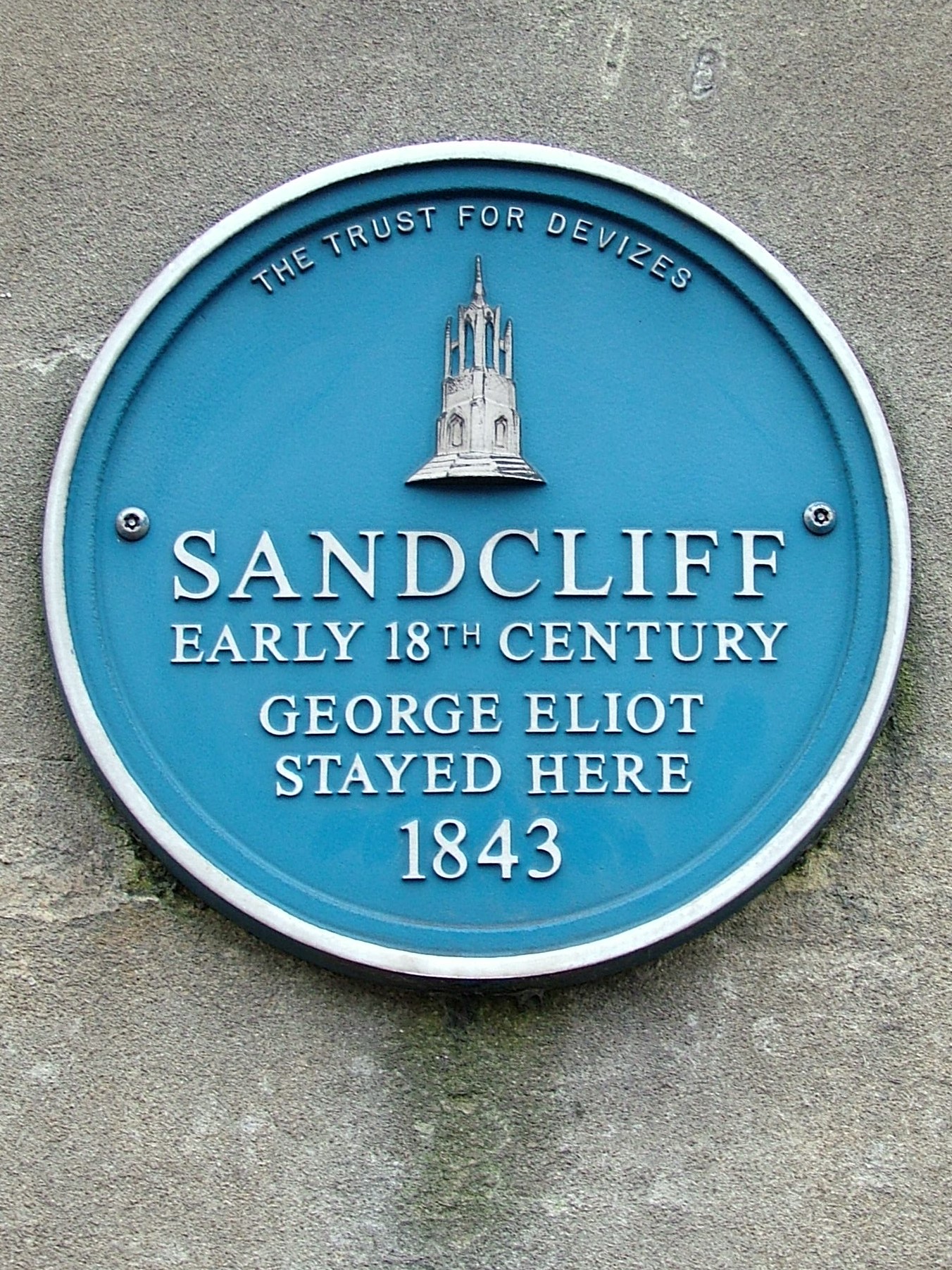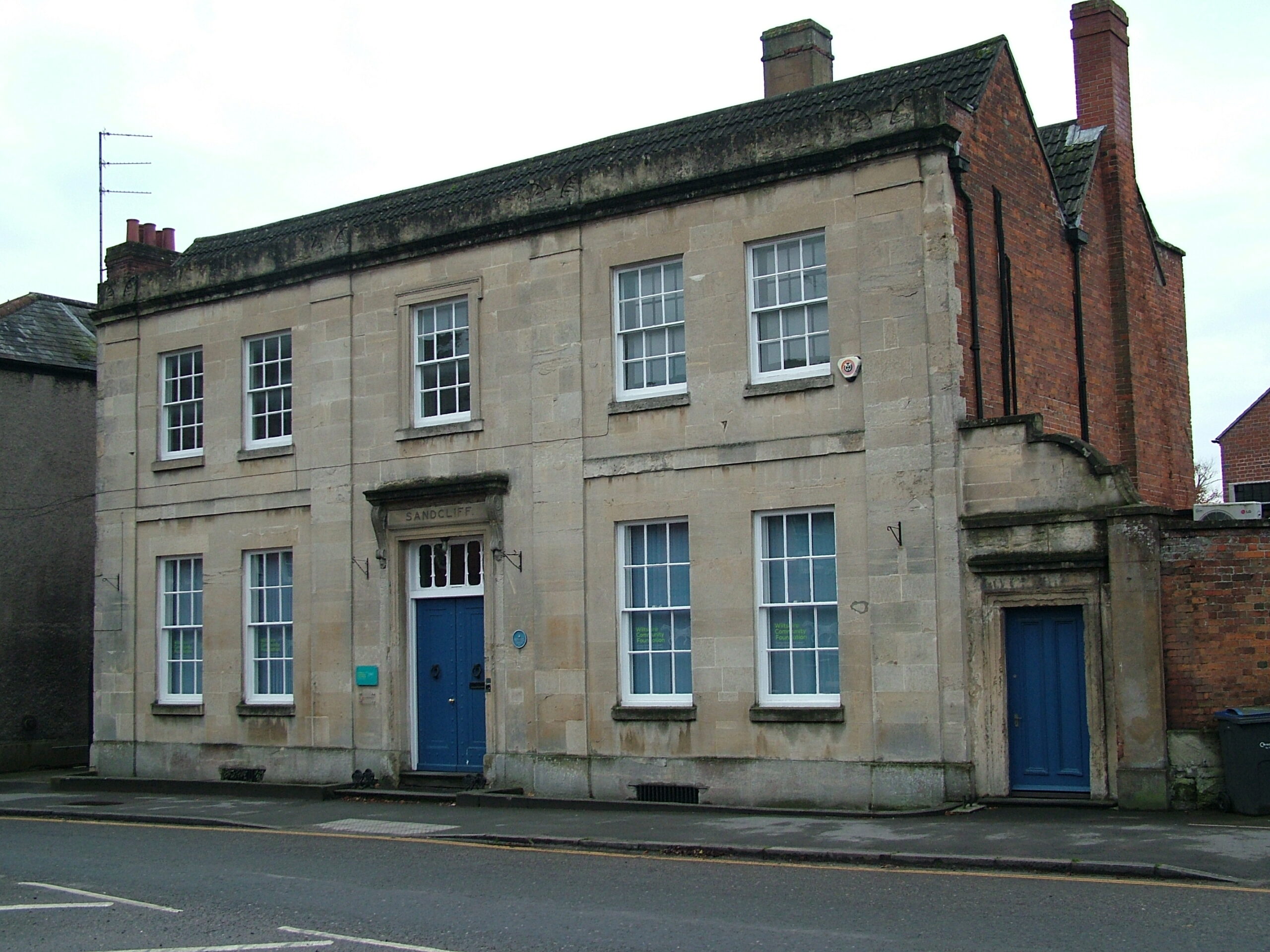During work in our Library and Archive, one of our volunteers discovered some interesting connections between George Eliot and Devizes. Newspaper cuttings of Eliot’s visit to Devizes, alongside ‘The George Eliot Fellowship Review (number 7)’ a postcard of her birthplace.
Read the volunteer’s account below:
22 November 2019 saw the two hundredth anniversary of the birth in Warwickshire of Mary Anne Evans, better known as the great Victorian novelist George Eliot whose masterpiece Middlemarch (1871-2) was famously described by Virginia Woolf as “one of the few English novels written for grown-up people”.
She has another and more local claim on our attention. In late 1843 the young Miss Evans came to stay at Sandcliff in Northgate Street at the invitation of the father of her good friend Rufa Brabant. Dr Robert Brabant, medical practitioner and a leading Devizes figure, had met her at Rufa’s wedding and they discovered a shared interest in modern German theology. However, things did not go altogether as planned, though exactly what happened is obscure. It seems likely that the invalid Mrs Brabant became (or was persuaded to become) less than happy with the situation, and the visit was cut short. But Dr Brabant, who later moved to Bath and died in 1866, was not to be forgotten. Almost forty years later, together with Mark Pattison and possibly others, he was drawn upon in Middlemarch to create the Reverend Edward Casaubon, a dry middle-aged pedant who enters into an unhappy marriage with the idealistic young Dorothea Brooke.
There was a second, much later visit to Devizes in 1874 when George Eliot put up at The Bear whilst seeking places for use in her final novel Daniel Deronda (1876). It proved a fruitful business, yielding Topping Abbey (Lacock), Diplow (Bowood), Offendene (Spye Park), Brackenshaw (Corsham Court), and Gadsmere (Folly Farm, near Corsham).
And George Eliot’s views on Devizes? We catch a glimpse in a letter sent to a friend during her 1843 visit when she writes, characteristically combining directness and self-knowledge: “The people here are all so ugly! Almost as ugly as I am.” It calls to mind Edward Gibbon’s unfavourable verdict eighty years earlier when leaving the town after spending time there on militia exercises. Following a catalogue of complaints the future historian concludes that “the Devizes were quarters we were all glad to leave”.
Sandcliff continued to serve as a doctor’s house well into the late twentieth century. Its last medical resident was the much loved Dr John Siggers (1906-88), who came to Devizes in 1937, moving to Sandcliff in 1938 and practising from there until his death. Alongside his close study of Wiltshire postmarks he developed a keen interest in the young woman who had stayed in his house early in Victoria’s reign and he amassed a considerable collection of books and material on George Eliot which is now held in the Wiltshire Museum.
Written by a Library and Archive Volunteer


